trial

 Andersonville POW camp was a Civil War era POW camp that was heavily fortified. It was run by Captain Henry Wirz, who was tried by a military tribunal on charges of war crimes when the war was over. The trial was presided over by Union General Lew Wallace and featured chief Judge Advocate General (JAG) prosecutor Norton Parker Chipman. The prison is located near Andersonville, Georgia, and today is a national historic site that is also known as Camp Sumpter. To me, its design had a somewhat unusual layout in that it had what is called a “Dead Line”. Some people might know what that is, but any prisoner who dared to tough it, much less try to cross it, found out very quickly what it was, because they were shot instantly…no questions asked. For that reason, prisoners rarely escaped from Andersonville Prison. The “dead line” was set up by the Confederate forces guarding the prison, to assist in prisoner control. The prison operated between February 25, 1864, and May 9, 1864. During that time, a total of 4,588 patients visited the Andersonville prison hospital, and 1,026 never left there alive.
Andersonville POW camp was a Civil War era POW camp that was heavily fortified. It was run by Captain Henry Wirz, who was tried by a military tribunal on charges of war crimes when the war was over. The trial was presided over by Union General Lew Wallace and featured chief Judge Advocate General (JAG) prosecutor Norton Parker Chipman. The prison is located near Andersonville, Georgia, and today is a national historic site that is also known as Camp Sumpter. To me, its design had a somewhat unusual layout in that it had what is called a “Dead Line”. Some people might know what that is, but any prisoner who dared to tough it, much less try to cross it, found out very quickly what it was, because they were shot instantly…no questions asked. For that reason, prisoners rarely escaped from Andersonville Prison. The “dead line” was set up by the Confederate forces guarding the prison, to assist in prisoner control. The prison operated between February 25, 1864, and May 9, 1864. During that time, a total of 4,588 patients visited the Andersonville prison hospital, and 1,026 never left there alive.
According to former prisoner, enlisted soldier John Levi Maile, “It consisted of a narrow strip of board nailed to a row of stakes, about four feet high.” The “dead line” completely encircled Andersonville. Soldiers were told to “shoot any prisoner who touches the ‘dead line'” “It was the standing order to the guards,” Maile explained. “A sick prisoner inadvertently placing his hand on the “dead line” for support… or anyone touching it with suicidal intent, would be instantly shot at, the scattering balls usually striking other than the one aimed at.” It was a risk the prisoners took if they chose to be anywhere near the “dead line” at all. Prisoner Prescott Tracy worked as a clerk in the Andersonville hospital. He said, “I have seen one hundred and fifty bodies waiting passage to the “dead house,” to be buried with those who died in hospital. The average of deaths through the earlier months was thirty a day; at the time I left, the average was over one hundred and thirty, and one day the record showed one hundred and forty-six.” The major threats in the prison camp were diarrhea, dysentery, and scurvy.
A sergeant major in the 16th Regiment Connecticut Volunteers, Robert H. Kellogg what he saw when he entered the camp as a prisoner on May 2, 1864, “As we entered the place, a spectacle met our eyes that almost froze our blood with horror, and made our hearts fail within us. Before us were forms that had once been active and erect…stalwart men, now nothing but mere walking skeletons, covered with filth and vermin. Many of our men, in the heat and intensity of their feeling, exclaimed with earnestness. “Can this be hell?” “God protect us!” and all thought that he alone could bring them out alive from so terrible a place. In the center of the whole was a swamp, occupying about three or four acres of the narrowed limits, and a part of this marshy place had been used by the prisoners as a sink, and excrement covered the ground, the scent arising from which was suffocating. The ground allotted to our ninety was near the edge of this plague-spot, and how we were to live through the warm summer weather in the midst of such fearful surroundings, was more than we cared to think of just then.”
After hearing the accounts of men who had the misfortune of being incarcerated in this horrific POW camp, I 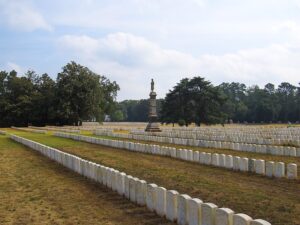
 wondered if there might have been some changes had the camp been run in more modern times. Of course, there is no guarantee of that, since there has been mistreatment of prisoners-of-war in all wars, and the treatment ultimately falls on the people running the camp and the soldiers monitoring the prisoners. It is, however, a sad state of affairs when prisoners are starved, beaten, frozen, and otherwise mistreated in these camps. The point is to hold them, not murder them.
wondered if there might have been some changes had the camp been run in more modern times. Of course, there is no guarantee of that, since there has been mistreatment of prisoners-of-war in all wars, and the treatment ultimately falls on the people running the camp and the soldiers monitoring the prisoners. It is, however, a sad state of affairs when prisoners are starved, beaten, frozen, and otherwise mistreated in these camps. The point is to hold them, not murder them.
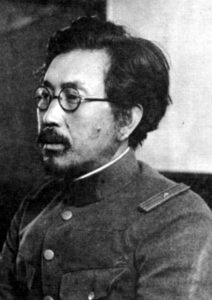 When we think of wartime atrocities, most of us think of the Holocaust, and that was indeed a horrible atrocity. Nevertheless, there have been a number of horrible dictators in history, and most of them committed some kind of atrocity. One of the worst atrocities in history, is one that very few people even know about. Most people have heard about the horrible experiments the Nazis performed on humans. The Nazi doctor, Joseph Mengele headed up that torture practice. But the Nazis weren’t alone in conducting cruel experiments on humans. The Imperial Japanese Army’s Unit 731. Some of the details of this unit’s activities are still uncovered. I don’t understand how anyone could have such little regard for human life, as to conduct some of the horrible experiments n them that some of these dictators and their cohorts did.
When we think of wartime atrocities, most of us think of the Holocaust, and that was indeed a horrible atrocity. Nevertheless, there have been a number of horrible dictators in history, and most of them committed some kind of atrocity. One of the worst atrocities in history, is one that very few people even know about. Most people have heard about the horrible experiments the Nazis performed on humans. The Nazi doctor, Joseph Mengele headed up that torture practice. But the Nazis weren’t alone in conducting cruel experiments on humans. The Imperial Japanese Army’s Unit 731. Some of the details of this unit’s activities are still uncovered. I don’t understand how anyone could have such little regard for human life, as to conduct some of the horrible experiments n them that some of these dictators and their cohorts did.
For 40 years, the horrific activities of “Unit 731” remained one the most closely guarded secrets of World War II. It was not until 1984 that Japan acknowledged what it had done and long denied. The vile experiments on humans conducted by the unit in preparation for germ warfare were atrocious. The Japanese doctors deliberately infected people with plague, anthrax, cholera and other pathogens. It is estimated that as many as 3,000 enemy soldiers and civilians were used as guinea pigs. Some of the more horrific experiments included surgery without anesthesia to see how the human body handled pain, and pressure chambers to see how much pressure a human could take before his eyes popped out.
The compound for Unit 731 was set up in 1938 in Japanese-occupied China with the aim of developing biological weapons. It also operated a secret research and experimental school in Shinjuku, central Tokyo. Its 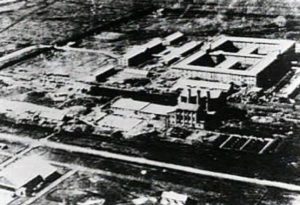 head was Lieutenant Shiro Ishii. Japanese universities and medical schools also supported the unit, by supplying doctors and research staff. I can’t imagine being assigned to such a facility. The picture now emerging about Unit 731’s activities is horrifying. According to reports, which were never officially admitted by the Japanese authorities, the unit used thousands of Chinese and other Asian civilians and wartime prisoners as human guinea pigs to breed and develop killer diseases. Many of the prisoners, who were murdered in the name of research, were used in hideous vivisection and other medical experiments, including barbaric trials to determine the effect of frostbite on the human body. To ease the conscience of those involved, if that is even possible, the prisoners were referred to not as people or patients, but as “Maruta”, which means wooden logs. I suppose they thought it would help, but I doubt if it did.
head was Lieutenant Shiro Ishii. Japanese universities and medical schools also supported the unit, by supplying doctors and research staff. I can’t imagine being assigned to such a facility. The picture now emerging about Unit 731’s activities is horrifying. According to reports, which were never officially admitted by the Japanese authorities, the unit used thousands of Chinese and other Asian civilians and wartime prisoners as human guinea pigs to breed and develop killer diseases. Many of the prisoners, who were murdered in the name of research, were used in hideous vivisection and other medical experiments, including barbaric trials to determine the effect of frostbite on the human body. To ease the conscience of those involved, if that is even possible, the prisoners were referred to not as people or patients, but as “Maruta”, which means wooden logs. I suppose they thought it would help, but I doubt if it did.
Before Japan’s surrender, the site of the experiments was completely destroyed, so that no evidence is left. I don’t suppose we would have known anything had it not been for the pictures that have surfaced, and people who have told the story later. After the site was destroyed, the remaining 400 prisoners were shot and the employees of the unit had to swear secrecy, or risk their own death. The mice kept in the laboratory were then 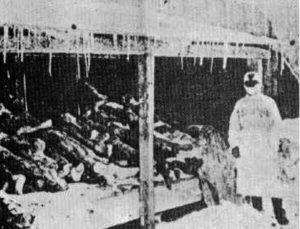 released, which most likely cost the lives of as many as 30,000 people, because the mice were infected with the Bubonic Plague, and they spread the disease. Few of those involved with Unit 731 have admitted their guilt. Some were caught in China at the end of the war, were arrested and detained, but only a handful of them were prosecuted for war crimes. In Japan, not one was brought to justice. In a secret deal, the post-war American administration gave them immunity for prosecution in return for details of their experiments. Some of the worst criminals, including Hisato Yoshimura, who was in charge of the frostbite experiments, went on to occupy key medical and other posts in public and private sectors…their guilty feelings, if they had any, existed only in their own minds.
released, which most likely cost the lives of as many as 30,000 people, because the mice were infected with the Bubonic Plague, and they spread the disease. Few of those involved with Unit 731 have admitted their guilt. Some were caught in China at the end of the war, were arrested and detained, but only a handful of them were prosecuted for war crimes. In Japan, not one was brought to justice. In a secret deal, the post-war American administration gave them immunity for prosecution in return for details of their experiments. Some of the worst criminals, including Hisato Yoshimura, who was in charge of the frostbite experiments, went on to occupy key medical and other posts in public and private sectors…their guilty feelings, if they had any, existed only in their own minds.
 Every year since they were born, we have taken Christmas pictures of my grandchildren together. Everyone loves to get those new pictures to compare with a year ago. Kids change so fast. Some years have been a trial, some years feel almost impossible. My grandchildren are all very different people, and they have very different personalities.
Every year since they were born, we have taken Christmas pictures of my grandchildren together. Everyone loves to get those new pictures to compare with a year ago. Kids change so fast. Some years have been a trial, some years feel almost impossible. My grandchildren are all very different people, and they have very different personalities.
That was not totally the problem in the really early years. When you are dealing with infants, they are either asleep or crying. So you work with them and work with them until it is finally right, and after this photo session, you head home to put the baby down for a nap, and take one yourself, because…you have earned it.
As they get older, it’s the fighting that stalls the whole process. This one doesn’t want to sit next to that one, or this one wants to be in the back, not the front, or someone is touching someone else. Oh my gosh, the tragedy of it all. Heaven forbid, having to be somewhere in the picture that you didn’t want to, and if you let them choose, they all want the same place. And all you can think of is next year they will be one year older and it will work better.
Then next year comes around, and you have a whole new set of issues. Makeup is horrible, or is it the hair, they hate what they are wearing, or the inevitable as they become teenagers…they are too tired. So you try letting them pick a few of the poses to break the ice a bit. Sometimes even that doesn’t work well, but sometimes it does, and you end up with a very funny pose, or set of poses.
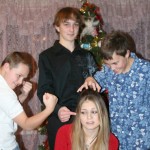
Ultimately, no matter what the age, with a little persuasion, such as the promise of candy afterward or…maybe bodily harm if they don’t behave, you get a few good poses, and the pictures turn out quite well. And of course, when the pictures are given out, and only the best ones are given out, by the way, everyone just loves them. They all think, “How did you pull that off? Getting them all to smile at the same time.” And of course, you just smile and let them think what they want. You know it was a lot of work, but…it was so worth it. Once again, it is time to start thinking about those pictures…no wonder I have a headache!!

